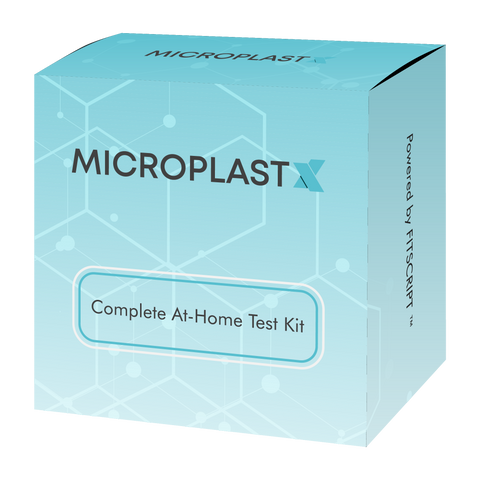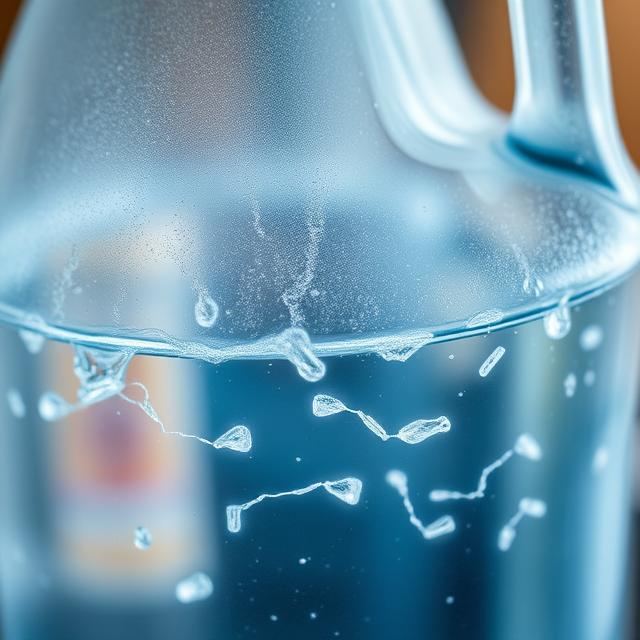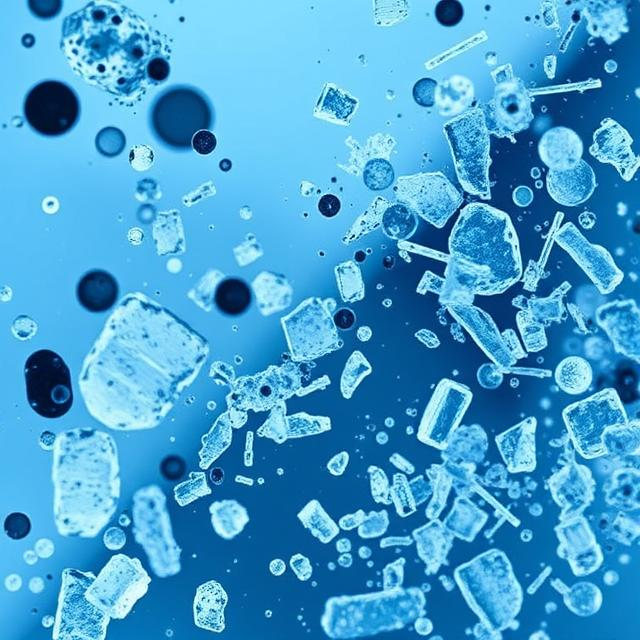Do Tea Bags Release Microplastics and Nanoplastics? What You Need to Know to Stay Safe
It might surprise you to learn that not all tea bags are made purely from natural fibres. Many popular tea bags, especially those that hold their shape well or have a silky feel, are actually made from plastics like polyethylene terephthalate (PET) or nylon. These synthetic materials are chosen for their durability and ability to withstand hot water without falling apart. When these plastic tea bags are steeped in hot water, they can release billions of microplastic and nanoplastic particles. Think about those fancy pyramid-shaped bags or the ones that look almost like a mesh. While they might seem premium, they often contain plastic. Even some paper tea bags can have a thin layer of plastic sealant to prevent them from tearing. If you're wondering how to test for microplastics in your home environment, MicroplastX provides resources to help you understand this growing concern. We believe that knowing what’s in your tea is the first step towards a healthier lifestyle.
Many consumers are unaware that:
-
Silky or Pyramid-Shaped Bags: These are often made from nylon or PET, which are types of plastic. They give the tea leaves more room to expand, but at a cost.
-
Paper Bags with a Sheen: Some traditional-looking paper tea bags use a thin layer of polypropylene (PP) as a heat sealant to keep the bag intact when wet. This plastic can also break down in hot water.
-
Biodegradable or Compostable Labels: Some tea bags labeled this way use PLA (polylactic acid), a plant-based plastic. While often touted as eco-friendly, PLA can still release microplastics, especially in hot water, and may require specific industrial composting conditions to fully break down.
The presence of these materials means that when you brew, tea bags release microplastics and nanoplastics directly into your drink. This is why it’s crucial to understand the materials in your tea bags to avoid unknowingly consuming plastic particles in tea. Our aim at MicroplastX is to empower you with this knowledge.
How Do Plastic Particles Enter Your Tea During Steeping?
The process is quite straightforward: when hot water comes into contact with plastic-based tea bags, the heat and agitation can cause the plastic material to break down. This breakdown releases tiny fragments – microplastics (smaller than 5mm) and even tinier nanoplastics (one-thousandth the size of microplastics) – directly into your cup. It's like a microscopic erosion process happening every time you brew. These particles are too small to see with the naked eye, so your tea might look perfectly clear, but it could contain these unseen contaminants. The higher the water temperature, the more likely these particles are to be released. This is a key reason why understanding the composition of your tea bag is so important. MicroplastX is dedicated to educating consumers about these hidden dangers, offering solutions to empower you with knowledge.
Are Paper or Mesh Tea Bags Safer Than Plastic Ones?
This is a common question, and the answer isn't always simple. While traditional paper tea bags might seem like a safer alternative, some still contain plastic fibres or are sealed with plastic adhesives. To be truly safe, you need to look for tea bags that are certified plastic-free, often made from natural materials like abaca (a type of banana leaf fibre) or corn starch-based PLA (polylactic acid), though even PLA can be a subject of debate for some. Mesh tea bags, if not clearly stated as plastic-free, are also likely to be made from synthetic materials. The safest option is often loose-leaf tea, which bypasses the need for any tea bag at all. This way, you have complete control over what goes into your cup. We at MicroplastX always recommend opting for loose-leaf tea to significantly reduce your exposure to plastic particles. For those concerned about exposure, our Microplastics Blood Test Kit offers a way to assess your body's microplastic levels.
-
Understanding Tea Bag Composition: Not all tea bags are created equal. Many common brands use plastics, and this is where tea bags release microplastics and nanoplastics.
-
The Problem with Heat: Hot water can accelerate the release of tiny plastic bits from tea bags, increasing the presence of plastic particles in tea.
-
Testing Your Environment: Learn how to test for microplastics in your home for broader awareness regarding microplastics in tea bags.
-
Opt for Loose Leaf: This is the best way to ensure no plastic particles in tea. You can explore options for a Microplastics Blood Test Kit if you're concerned about your current exposure.
What Are the Health Risks of Microplastics in Tea?
When tea bags release microplastics, these tiny particles enter your body with every sip. While research is still ongoing, preliminary studies suggest that consuming microplastics can pose various health risks. These particles are not easily broken down by the body and can accumulate in different organs. The exact long-term effects of microplastics in tea are still being studied, but scientists are raising concerns about several potential impacts.
Possible concerns include:
-
Inflammation: Microplastics can cause an inflammatory response as your body tries to fight off these foreign invaders. This chronic inflammation could potentially contribute to a range of health issues over time.
-
Cellular Damage: Their incredibly small size allows them to penetrate cells, potentially disrupting normal functions. Some research even suggests they can reach the nucleus of cells, which houses our DNA.
-
Chemical Leaching: The plastics themselves often contain various additives and chemicals used in their manufacturing, such as phthalates and bisphenol A (BPA). These harmful chemicals can leach out of the plastic particles and into your system, potentially acting as endocrine disruptors and interfering with your body's hormonal balance.
-
Gut Health Issues: There's a growing focus on how microplastics might impact the delicate balance of your gut microbiome. An imbalance in gut bacteria, known as dysbiosis, can lead to digestive problems, weakened immunity, and may even be linked to systemic inflammation.
-
Organ Accumulation: Studies have begun to detect microplastics in various human organs, including the liver, kidneys, and even the brain. This suggests that the body may not be fully capable of eliminating these particles, leading to potential accumulation over time.
-
Carrier of Other Contaminants: Microplastics can act as tiny sponges, adsorbing harmful bacteria, heavy metals, and other pollutants from the environment. Once ingested, they could potentially carry these additional toxins into your body.
Understanding how to test for microplastics in your environment and in your body is becoming increasingly important. MicroplastX emphasizes proactive steps to minimize exposure. We believe that being aware of these potential risks is the first step in taking control of your health when it comes to plastic particles in tea. For a clearer picture of your own exposure, considering our Microplastics Blood Test Kit can be a valuable step.
How Can You Avoid Microplastics in Your Daily Tea Routine?
Avoiding microplastics from your tea doesn't have to be complicated. Here are some simple, actionable steps you can take to prevent tea bags release microplastics into your cup:
-
Choose Loose-Leaf Tea: This is by far the most effective method. Without a tea bag, there's no risk of plastic particles in tea. Investing in a good quality loose-leaf tea and a tea infuser can elevate your tea experience while keeping it plastic-free.
-
Look for Certified Plastic-Free Tea Bags: If you prefer convenience, seek out brands that explicitly state their tea bags are free from plastics. Often, these are made from materials like abaca or are unbleached paper without sealants. Some companies now use innovative stitching methods instead of plastic glues.
-
Brew with Cold Water First (If Possible): While not practical for all teas, some studies suggest that hot water increases plastic release. For certain blends, consider cold brewing as an alternative.
-
Use a Tea Infuser: For loose-leaf tea, a reusable stainless steel or glass tea infuser is a great, plastic-free alternative. This allows the tea leaves to expand fully and release their flavour without any plastic interference.
-
DIY Tea Bags: You can make your own tea bags using unbleached cotton muslin or fillable paper tea bags that are certified plastic-free, ensuring no unwanted microplastics in tea bags. This gives you complete control over the materials.
-
Check Packaging Labels Carefully: Beyond the tea bag itself, look at the outer packaging. Some brands use plastic wraps or laminates even if their tea bags are plastic-free. Opt for brands committed to fully plastic-free packaging. For more details on what to look for, visit our guide on how to test for microplastics.
By making these small changes, you can significantly reduce the amount of tea bags release microplastics and nanoplastics into your daily routine. We at MicroplastX are committed to providing solutions for a healthier future.
Should You Test for Microplastic Exposure If You Drink Tea Daily?
Given that tea bags release microplastics and nanoplastics, and many of us enjoy tea daily, it's a valid question whether testing for exposure is necessary. If you've been a regular consumer of tea in conventional tea bags over many years, it's possible you've had cumulative exposure to plastic particles in tea. While our bodies have natural detoxification processes, the continuous introduction of microplastics can be a concern for some.
Consider testing if:
-
You've consumed tea from plastic-containing tea bags for an extended period.
-
You have general concerns about environmental toxin exposure.
-
You want to establish a baseline understanding of your body's microplastic burden.
MicroplastX offers a direct solution for this concern. Our Microplastics Blood Test Kit provides a convenient way to assess your internal microplastic levels. This can offer peace of mind or help you make more informed decisions about your lifestyle and dietary choices going forward. Understanding your personal exposure to microplastics in tea bags is a powerful step towards taking control of your health.




